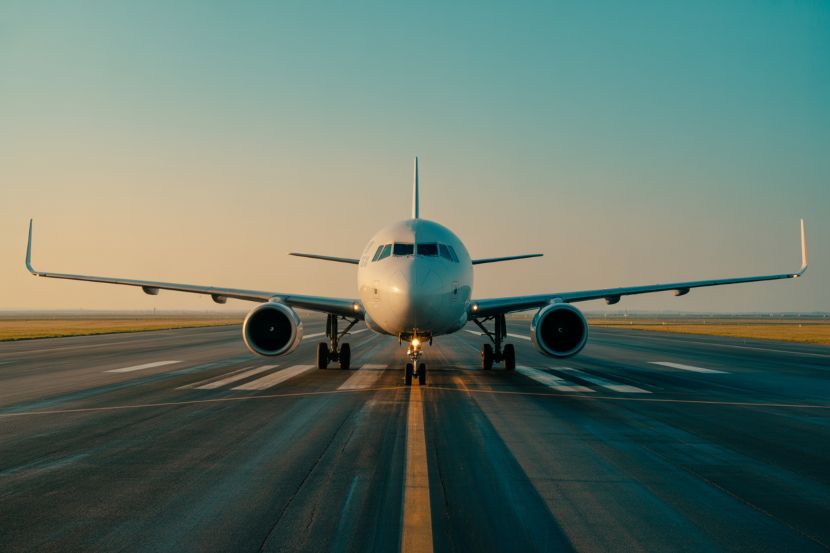Published on
October 17, 2025

India’s aviation market is on a steep upward trajectory, connecting more cities across Asia, the Middle East, and Europe than ever before. But with this expansion comes a heavy climate responsibility. In the effort to reduce global emissions from aviation, India’s Aviation Boom Could Power Clean Flight Innovations that not only transform air travel within the country but also influence global sustainability efforts. A proposed emissions-scoring system could change how green aviation projects are funded—positioning India as a frontrunner in clean technology and sustainable tourism.
What’s Preventing Green Aviation Progress?
Despite increasing climate awareness, aviation continues to be one of the most difficult industries to decarbonise. Globally, it is responsible for around 3% of total greenhouse gas emissions, and that share is expected to grow. While billions are invested in aviation infrastructure each year, only a tiny fraction is directed at sustainability. This is largely because clean aviation technologies are still seen as high-risk with uncertain returns.
Projects like electric aircraft, hydrogen propulsion, or sustainable aviation fuels (SAFs) are in development, but they struggle to attract consistent investment without guarantees of success or profitability.
A New Way To Evaluate Green Projects: The Aviation Sustainability Index
To direct capital towards meaningful innovations, researchers have proposed an Aviation Sustainability Index (ASI). This framework would assign a score to green aviation initiatives based on how effectively they reduce emissions.
Technologies and projects—like SAF development, fuel-efficient aircraft, and alternative propulsion systems—would be rated for environmental performance. This would help:
- Investors distinguish genuine solutions from greenwashing
- Governments set funding priorities
- Airlines adopt cleaner systems with confidence
By clarifying the benefits and risks, the ASI could open the door for larger private-sector investment in clean aviation.
Why India’s Aviation Sector Is Critical For Global Change
India’s air travel industry is one of the fastest-growing in the world. Both domestic and international routes have seen exponential expansion over the past decade, with cities like Delhi, Mumbai, Hyderabad, and Bengaluru becoming major aviation hubs.
This rapid development presents an opportunity. India could become a global leader in clean aviation by:
- Encouraging SAF production using its abundant biomass resources
- Supporting low-emission aircraft development
- Adopting frameworks like the ASI to align finance and policy with climate goals
Already facing the harsh effects of climate change—from heatwaves to monsoon disruptions—India has strong motivation to act decisively.
Barriers to Overcome in India
While the potential is vast, India faces several internal challenges:
- Gaps in emissions monitoring: Accurate, transparent tracking of aviation emissions is still developing
- Infrastructure limitations: Airports and logistics systems are not yet SAF-ready at scale
- Regulatory lag: Policies to support innovation are fragmented or slow to implement
- Investor uncertainty: Clean aviation remains financially risky without institutional guarantees
These issues must be addressed through better governance, data systems, and climate financing reforms.
What This Means for Travellers
India’s transition to cleaner skies isn’t just about climate—it will shape how people travel in the future. Here’s what travellers can expect:
Travel Tips for Environmentally Conscious Flyers
- Choose airlines using SAFs: Some carriers may begin advertising flights with SAF blends—look for this when booking
- Non-stop is greener: Direct flights typically emit less per passenger than multiple short hops
- Fly light: Less luggage means less fuel consumption
- Support low-emission airports: Choose hubs that invest in solar energy, electric shuttles, or green certifications
- Offset carbon footprints: Use trusted programs to balance out emissions from long-haul travel
How Green Aviation Could Boost India’s Tourism Economy
Cleaner air travel may soon become a key selling point for Indian tourism. Eco-conscious travellers from Europe, the Middle East, and Southeast Asia are increasingly factoring in environmental impact when choosing destinations.
Tourism hotspots like Goa, Kerala, Rajasthan, and Himachal Pradesh—which rely on air connectivity—stand to benefit from a greener aviation sector. Cleaner skies and reduced flight emissions can also appeal to domestic eco-travellers seeking guilt-free exploration.
Additionally, regions involved in SAF feedstock supply chains could see economic benefits from tourism-linked green investments.
A Greener Sky Ahead for Indian and Global Aviation
As the aviation sector struggles to shrink its carbon footprint, India is uniquely positioned to become a global trendsetter. By embracing smart frameworks like the Aviation Sustainability Index, increasing support for SAF production, and integrating clean technologies across its airports and airlines, India could shift from being a fast-growing polluter to a clean aviation innovator.
Whether you’re a policymaker, investor, or frequent flyer, keeping an eye on India’s aviation journey could reveal what the future of global travel looks like.




